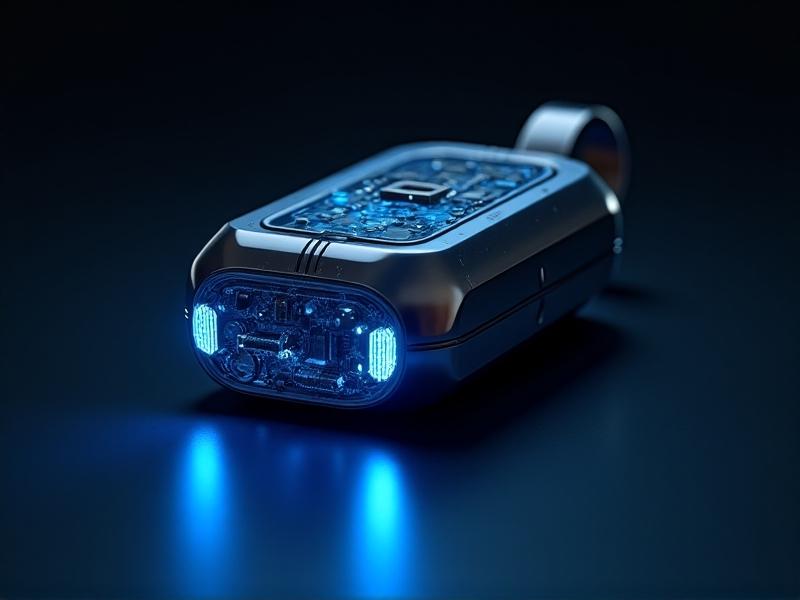Future Trends: Smart Whistles with Integrated Sensor Technology
The Evolution of Whistles: From Simple Tools to Smart Devices
Whistles have been a fundamental tool for communication and safety for centuries. From referees on sports fields to lifeguards on beaches, their piercing sound has been a reliable signal. However, the future of whistles is set to transcend their traditional role, thanks to the integration of advanced sensor technology. Smart whistles are emerging as a groundbreaking innovation, blending the simplicity of a whistle with the sophistication of modern tech. These devices are not just about producing sound; they are designed to collect data, enhance safety, and improve performance in various fields. This evolution marks a significant shift, turning a basic tool into a multifunctional, intelligent device.

How Smart Whistles Work: The Technology Behind the Innovation
At the heart of smart whistles lies a combination of sensors, microprocessors, and wireless connectivity. These components work together to transform a simple whistle into a data-collecting powerhouse. Whistle-embedded sensors can track a range of data including sound frequency, air pressure, and even the user's heart rate. The data is then processed by a microprocessor, which can analyze and store the information. Wireless connectivity allows the whistle to sync with smartphones or other devices, enabling real-time feedback and data sharing. This integration of technology not only enhances the functionality of the whistle but also opens up new possibilities for its use in sports, safety, and health monitoring.

Applications in Sports: Enhancing Performance and Safety
In the world of sports, smart whistles are revolutionizing the way athletes and coaches approach training and safety. For referees, these devices can provide real-time data on the intensity and frequency of whistle blows, ensuring consistent performance throughout a game. Athletes can use smart whistles to monitor their breathing patterns and heart rate during training, helping them optimize their workouts and prevent overexertion. The inclusion of GPS technology also enables tracking movement and positioning, which is very beneficial for team sports. By providing valuable insights and enhancing safety, smart whistles are becoming an indispensable tool for athletes and sports professionals.

Safety and Emergency Response: A Lifesaving Innovation
Smart whistles are proving to be a game-changer in safety and emergency response scenarios. For lifeguards, these devices can detect the intensity of a whistle blow and automatically send alerts to nearby emergency services if a distress signal is detected. In outdoor activities like hiking or mountaineering, smart whistles equipped with GPS and environmental sensors can help rescuers locate individuals in distress more quickly. The ability to transmit real-time data can significantly reduce response times, potentially saving lives. Moreover, the durability and reliability of smart whistles make them ideal for use in harsh environments, ensuring that they remain functional when needed most.
Health Monitoring: A New Frontier for Wearable Tech
Smart whistles are also making waves in the realm of health monitoring. By integrating biometric sensors, these devices can track vital signs such as heart rate, oxygen levels, and even stress indicators. For people with chronic diseases or those trying to keep a healthy lifestyle, this tool is quite useful. The compact and portable nature of smart whistles makes them an attractive alternative to traditional wearable devices like smartwatches. With the ability to sync with health apps, users can easily monitor their progress and make informed decisions about their well-being. As the technology continues to evolve, smart whistles could become a key component of personalized healthcare.
The Future of Smart Whistles: What Lies Ahead
The potential for smart whistles is vast, and as technology continues to advance, so too will their capabilities. Future iterations may include AI-driven analytics, providing even more detailed insights and personalized recommendations. Integration with augmented reality (AR) could offer new ways to visualize data and enhance training experiences. Additionally, the development of more robust and energy-efficient sensors will ensure that smart whistles remain practical and accessible. As these devices become more sophisticated, they will likely find applications in new fields, further solidifying their place as a versatile and essential tool. The future of smart whistles is bright, and their impact on various industries is only just beginning to be realized.








